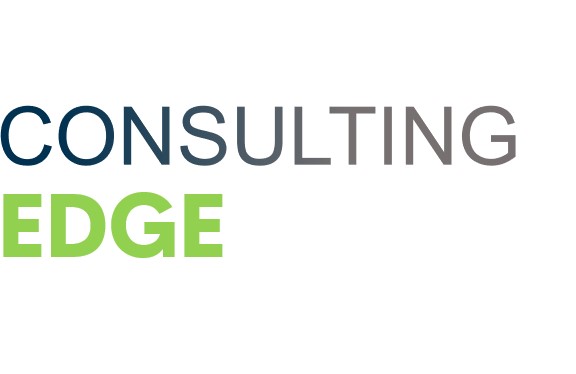
Transforming Communication Through Active Listening
Active listening transforms communication beyond just hearing words. This powerful skill requires complete mental and emotional engagement with the speaker’s message. By capturing both verbal cues and body language, you’ll create meaningful workplace connections, build trust, and deepen interpersonal understanding.
Key Takeaways
- Active listening demands full mental presence and empathetic engagement with the speaker.
- The skill involves intentional focus, patience, and suspension of immediate judgment.
- Effective active listening can improve workplace productivity by up to 25%.
- Practicing this technique builds stronger interpersonal relationships and trust.
- Active listening is crucial for enhanced decision-making and problem-solving capabilities.
Research from the Harvard Business Review confirms that strong listening skills directly correlate with leadership effectiveness. The practice requires you to eliminate distractions and fully concentrate on the speaker’s message without formulating responses while they’re still talking.
The Role of Body Language
Your body language plays a critical role in demonstrating attentiveness. Maintain appropriate eye contact, nod occasionally, and position yourself to face the speaker directly. These non-verbal signals show respect and create a safe space for open communication.
Thoughtful Questions as a Technique
Asking thoughtful questions stands as one of the most powerful active listening techniques. Clarifying questions demonstrate your engagement and help prevent misunderstandings that could derail productive conversations.
Managing Distractions
Modern workplaces face constant interruptions from technology. Turn off notifications during important conversations to give speakers your complete attention. This small act significantly impacts how valued others feel during interactions.
Consistent Practice for Skill Development
Developing this skill takes consistent practice. Start by focusing intently during one conversation each day, then gradually increase your active listening periods. The Center for Creative Leadership suggests regular self-assessment to track improvement.
“Active listening transcends hearing; it demands our complete presence and empathy, allowing us to forge deeper connections and trust in the workplace. By committing to this transformative skill, we unlock the potential for enhanced understanding, collaboration, and productivity.”
The Essence of Active Listening
Active listening stands as a foundational communication skill that transcends passive hearing to fully engage with a speaker’s message. This skill involves more than simply receiving sound waves—it requires your complete mental and emotional presence to capture both spoken words and unspoken cues. Active listening encompasses empathy, patience, intentionality, and the creation of meaningful dialogue between participants.
You can distinguish active listening from its passive counterpart through the level of engagement it demands. While passive listening keeps you on the receiving end with minimal involvement, active listening enhances interpersonal communication by demonstrating genuine interest and understanding. The core goal remains consistent: to foster trust, deepen comprehension, and create meaningful workplace connections.
Key Characteristics of Active Listening
Effective active listeners share several defining traits that set them apart in professional settings:
- Empathetic engagement: Connecting with the speaker’s perspective and emotional state
- Patient attentiveness: Allowing others to express themselves fully without interruption
- Intentional focus: Directing complete attention to the speaker without mental wandering
- Responsive presence: Providing appropriate verbal and non-verbal feedback
- Judgment suspension: Hearing complete thoughts before forming conclusions
The impact of mastering this skill extends throughout your professional interactions. Successful project execution often depends on clear understanding between team members. When you listen actively, you create an environment where ideas flow freely, problems surface earlier, and solutions emerge through collaborative thinking.
Understanding the essence of active listening provides the foundation for developing this critical skill. By committing to full engagement rather than superficial hearing, you transform routine conversations into opportunities for genuine connection and improved workplace outcomes. This shift from passive reception to active participation marks the beginning of more productive professional relationships and enhanced communication efficiency.
Active listening is not just hearing what the other person says; it’s understanding and conveying the message in a way that shows you care.
hbr.org
Mastering Active Listening Techniques
Active listening goes far beyond simply hearing words. It’s a deliberate communication approach that requires your full attention and engagement with the speaker’s message. This powerful skill combines empathy, patience, intentionality, and meaningful dialogue to create deeper understanding in workplace conversations.
When you practice active listening, you’re not just waiting for your turn to speak—you’re fully absorbing what others communicate. The core goal is to build trust, enhance comprehension, and create meaningful workplace connections that drive results.
Essential Active Listening Techniques
To become skilled at active listening, you need to develop several key techniques:
- Be fully present during conversations by eliminating distractions and maintaining focused body language. This means putting away your phone, closing your laptop, and giving your complete attention to the speaker.
- Interpreting nonverbal signals requires you to analyze tone, pace, and body language alongside spoken words. These subtle cues often reveal more than verbal communication alone. When improving interpersonal communication with project teams, these nonverbal insights become especially valuable.
- Use open-ended questioning to encourage deeper exploration of topics. Questions beginning with “what,” “how,” or “why” prompt more thoughtful responses than those requiring only yes/no answers.
- Reflection and paraphrasing demonstrate your engagement by restating key points in your own words. This technique confirms understanding and shows genuine investment in the conversation. Effective project communication relies heavily on this confirmation process.
- Suspend judgment during conversations by avoiding premature interruptions or rushing to problem-solving. Allow the speaker to fully express their thoughts without immediate evaluation.
- Cultivate patience by creating conversational space and psychological safety. This means becoming comfortable with silence and giving others time to gather their thoughts.
The benefits of mastering these techniques extend throughout your workplace. Teams experience up to 25% increased productivity through improved collaboration, while employee satisfaction can rise by 30%. For leaders, active listening directly enhances your perceived competence and trustworthiness while demonstrating emotional intelligence.
In customer interactions, active listening drives satisfaction and reduces service-related turnover. With 96% of B2B customers basing repurchase decisions on brand experience, your listening skills directly impact revenue and relationships.

Transformative Workplace Benefits
Active listening fundamentally transforms workplace dynamics, creating measurable improvements across multiple business dimensions. When you incorporate active listening into your company culture, you’ll notice significant positive changes in team performance and overall organizational health.
Building Trust and Enhancing Decision-Making
Active listening serves as a powerful trust-building mechanism within teams. When employees feel genuinely heard, they develop stronger connections with colleagues and leaders, resulting in increased team cohesion. This heightened trust creates an environment where team members feel valued and respected.
The benefits of active listening extend beyond interpersonal relationships to impact your organization’s decision-making processes. Teams that practice active listening process information more effectively, considering diverse perspectives before reaching conclusions. This approach leads to more comprehensive and well-informed decisions that address complex problems from multiple angles.
Here are key workplace transformations you’ll experience through active listening implementation:
- Collaboration improvement with up to 25% increase in team productivity
- Employee morale boost showing 30% improvement in employee satisfaction
- Conflict reduction through clearer communication channels
- Enhanced problem-solving capabilities through diverse input consideration
- Stronger organizational culture built on mutual respect
Active listening also plays a crucial role in project collaboration, where clear communication directly impacts success rates. When team members actively listen to stakeholders, they better understand project requirements and can address potential roadblocks before they become problematic.
The impact of active listening extends to customer interactions as well. Organizations that train employees to listen actively to customers experience higher satisfaction rates and reduced service-related churn. This skill proves particularly valuable when identifying project stakeholders and understanding their unique needs and concerns.
By integrating active listening practices into daily operations, you create an environment where information flows freely, innovative ideas flourish, and employees feel genuinely valued. This transformation doesn’t happen overnight, but with consistent application, active listening becomes a competitive advantage that enhances every aspect of your business operations.
Companies with strong communication practices are 4.5 times more likely to retain their best employees, showcasing the transformative power of effective listening.
forbes.com
Leadership and Active Listening
Active listening forms the cornerstone of effective leadership. When you practice this skill consistently, your team members perceive you as more competent and trustworthy. This perception doesn’t develop by chance—it stems from the genuine connection established when leaders truly hear and understand their teams.
Building Leadership Credibility Through Listening
Your leadership effectiveness hinges significantly on how well you listen. Active listening directly impacts key organizational outcomes by:
- Creating psychological safety that encourages team members to speak up
- Demonstrating respect that fosters loyalty and commitment
- Improving decision quality through comprehensive information gathering
- Modeling communication behaviors you want your team to adopt
- Identifying potential issues before they become major problems
The foundations of project leadership are built on communication skills that extend beyond simply directing others. When you employ active listening techniques, you’re 70% more likely to successfully engage employees in change initiatives and implementation efforts.
Active listening also plays a crucial role in managing project issues effectively. By carefully attending to team concerns, you’ll gather valuable insights that help address problems at their root cause rather than merely treating symptoms.
Your emotional intelligence as a leader becomes evident through your listening practices. Consider these listening approaches and their impact on your leadership presence:
| Listening Approach | Leadership Perception | Team Response |
|---|---|---|
| Distracted listening | Disinterested, low EQ | Disengagement |
| Selective listening | Self-focused, political | Guardedness |
| Active listening | Respectful, emotionally intelligent | Openness and trust |
The connection between active listening and high-performing teams isn’t coincidental. Teams with leaders who practice active listening report 30% higher engagement scores and demonstrate significantly better problem-solving capabilities than their counterparts.
For complex initiatives, your listening skills become even more critical. During parallel project implementations, effective listening enables you to coordinate multiple workstreams while ensuring team members feel heard and valued throughout the process.
Leaders who actively listen foster a culture of trust and collaboration, resulting in a 30% increase in employee engagement and enhanced problem-solving abilities.
forbes.com
Active Listening in Customer Interactions
Active listening transforms ordinary customer interactions into exceptional experiences that build loyalty and drive business growth. When you fully engage with customer communication, you create opportunities for deeper understanding that passive listening simply cannot achieve.
Building Customer Trust Through Active Listening
Your ability to actively listen to customers directly impacts their satisfaction and retention rates. Research shows that 96% of B2B customers base their repurchase decisions on the overall brand experience rather than just product features. When customers feel genuinely heard, they develop stronger brand loyalty and become less price-sensitive.
Active listening with customers requires specific techniques that demonstrate your full attention:
- Make direct eye contact and maintain open body language to show engagement
- Use confirming phrases like “I understand” or “I see what you mean” to validate their concerns
- Summarize their main points to ensure accurate understanding of their needs
- Ask relevant follow-up questions that probe deeper into their situation
- Allow customers to complete their thoughts without interruption
The benefits of implementing active listening in customer-facing roles are substantial. By truly understanding customer needs, you can develop more effective communication strategies that address their specific concerns. This personalized approach reduces misunderstandings and creates opportunities to exceed expectations.
Active listening also helps you identify potential issues before they escalate into serious problems. When you detect subtle dissatisfaction in a customer’s tone or choice of words, you can address concerns proactively rather than reactively managing complaints.
The intelligence gathered through active listening often reveals valuable innovation opportunities. Customers frequently share insights about product improvements, service gaps, and unmet needs that can drive your next breakthrough. These hidden customer insights represent a competitive advantage for companies that excel at listening.
For complex customer situations, active listening helps you develop tailored response strategies that demonstrate your commitment to their success. This approach transforms you from a vendor into a valued partner who understands their business challenges and priorities.






